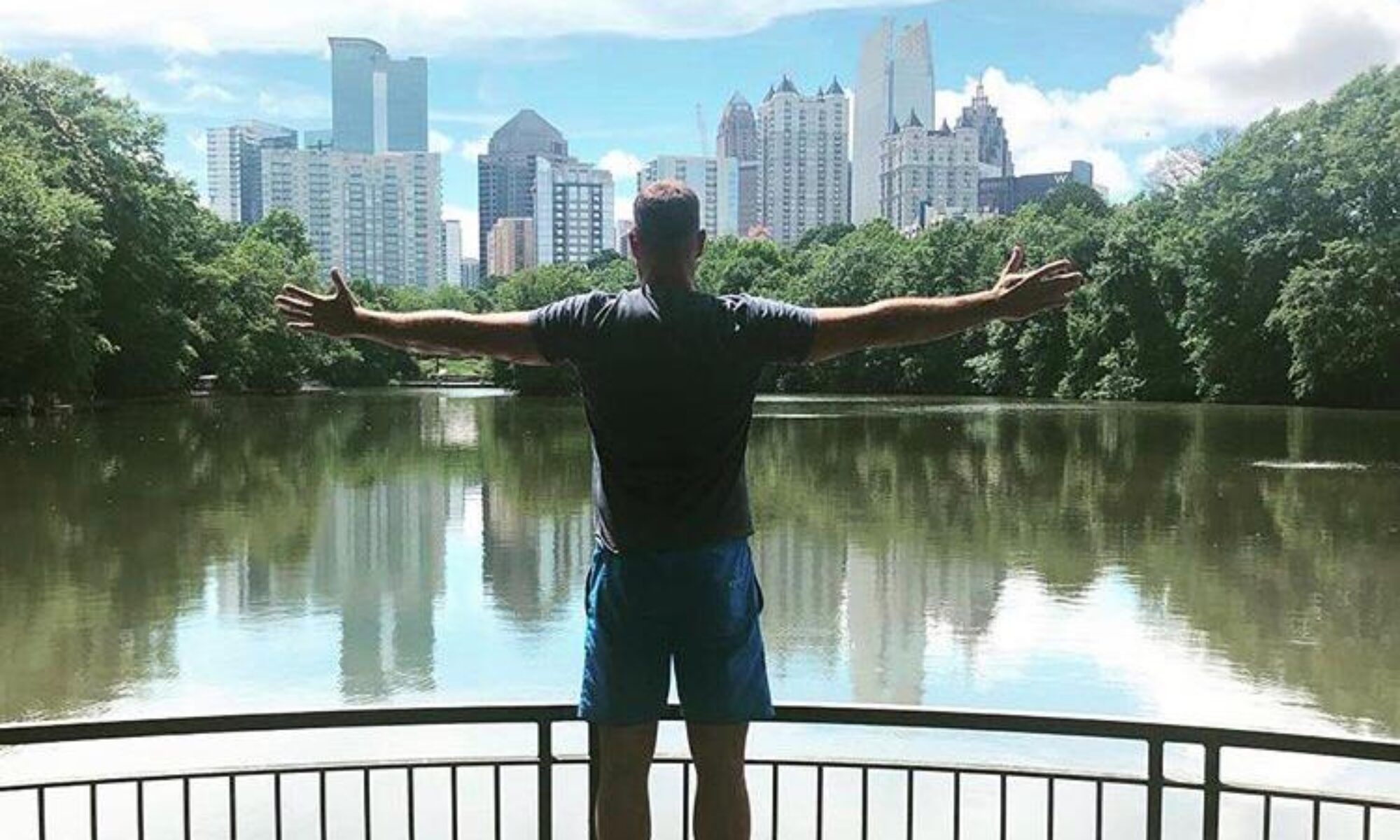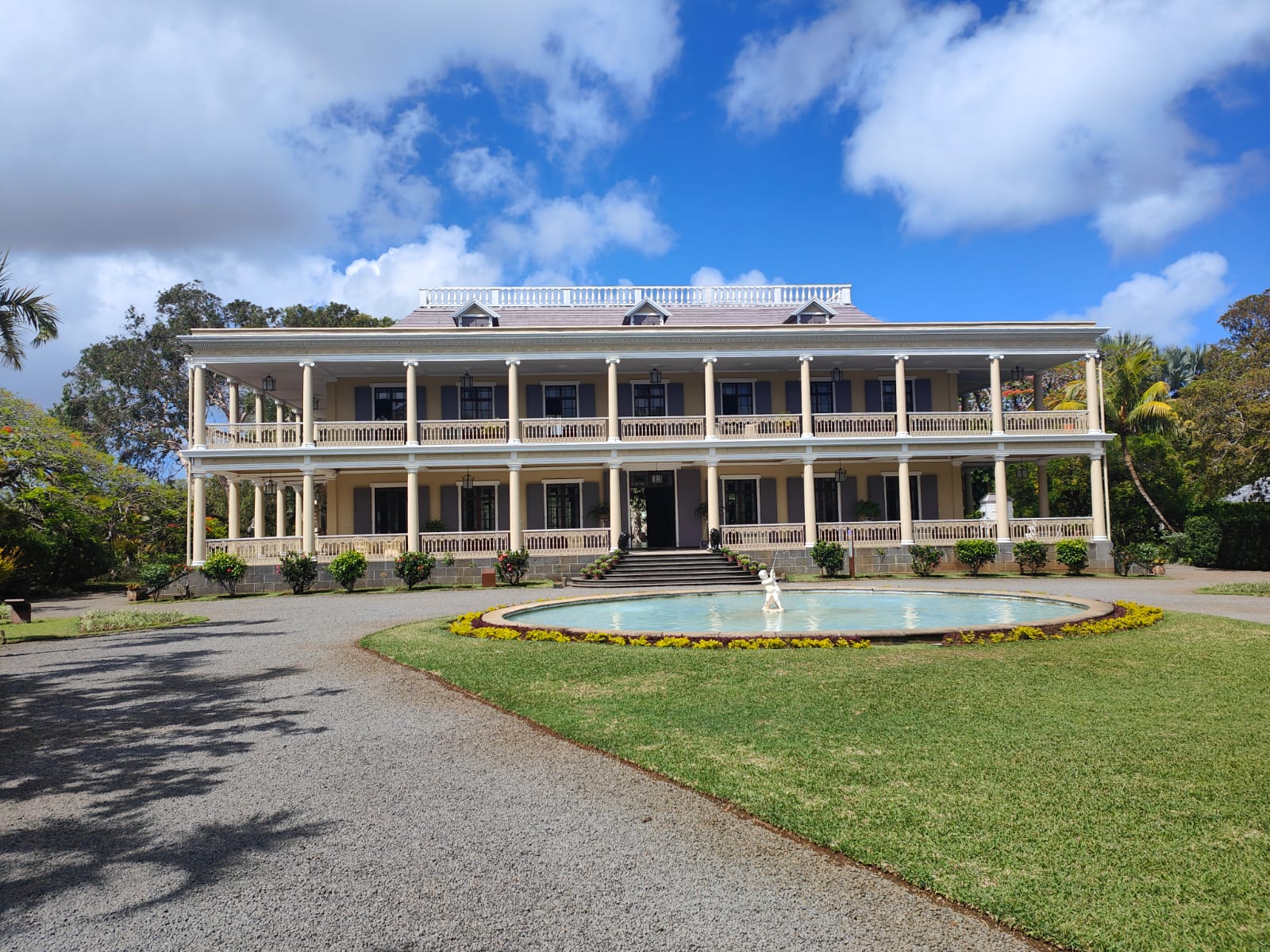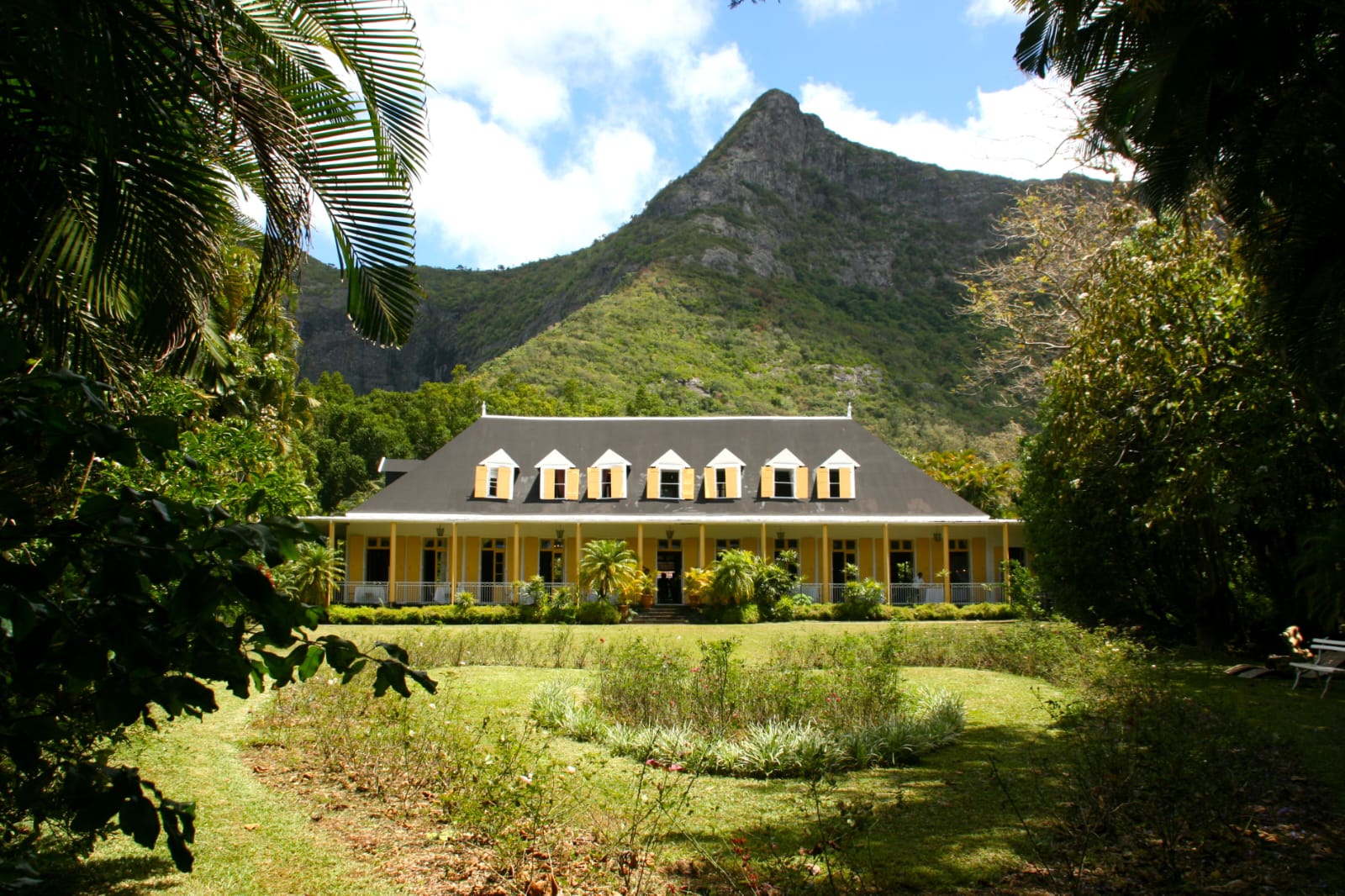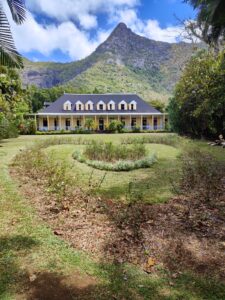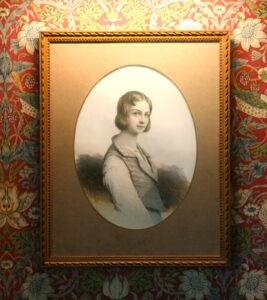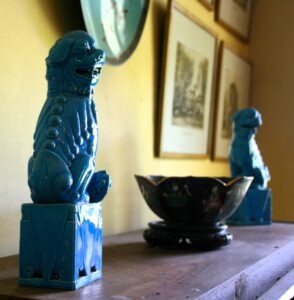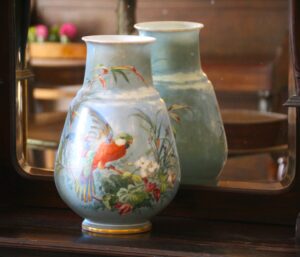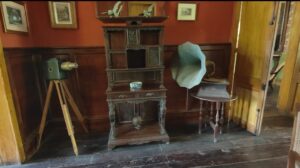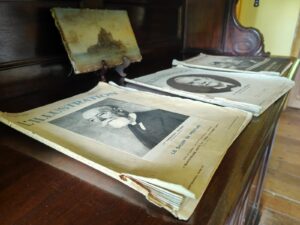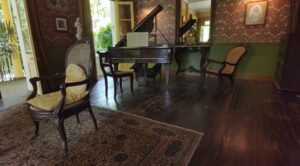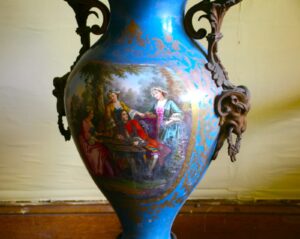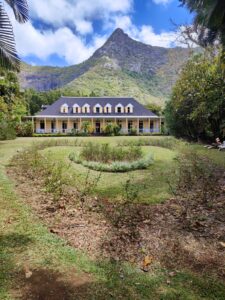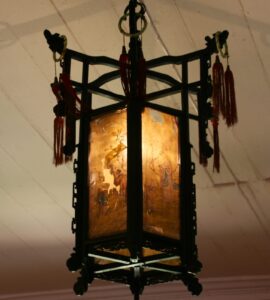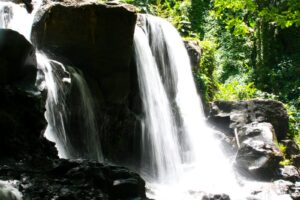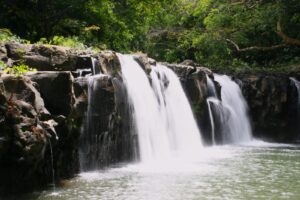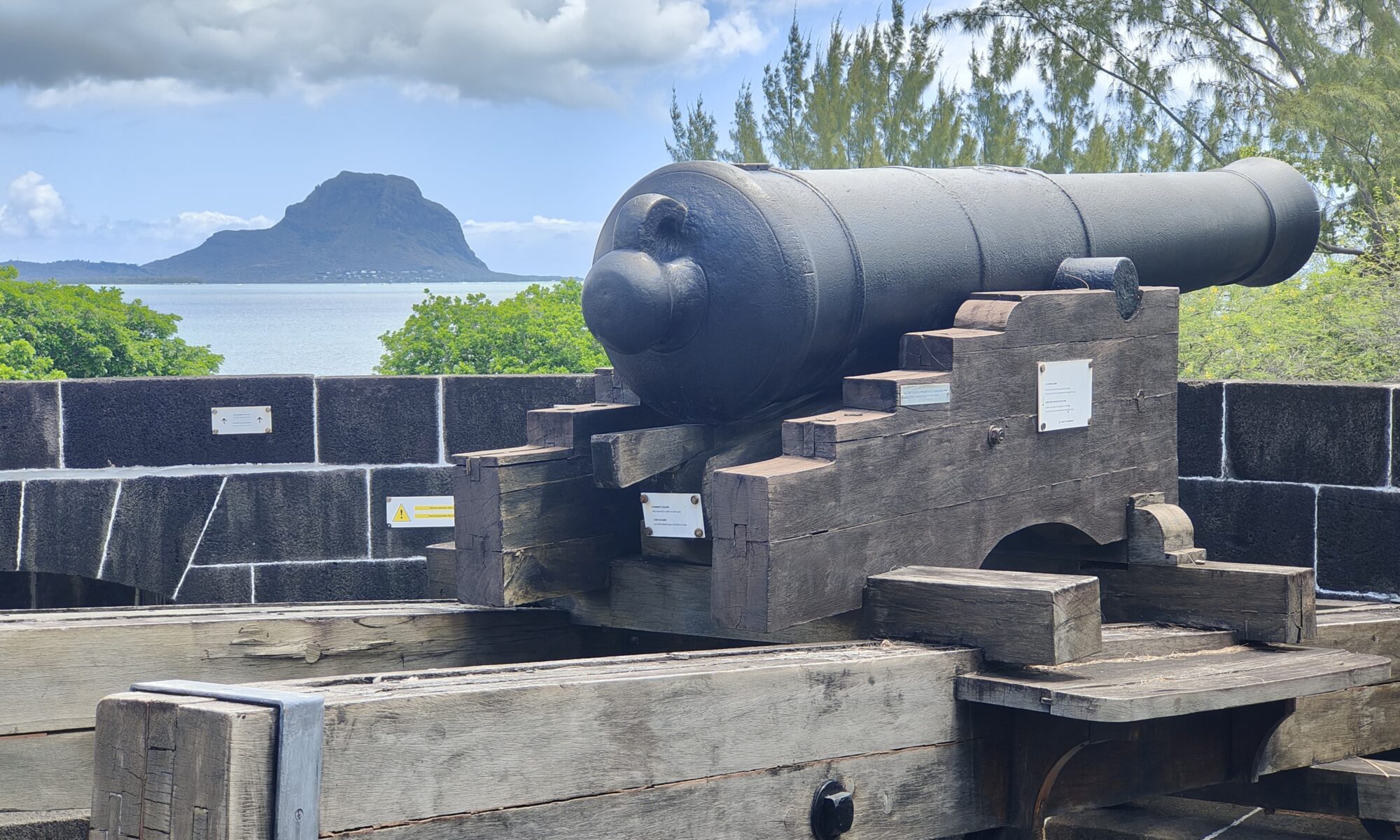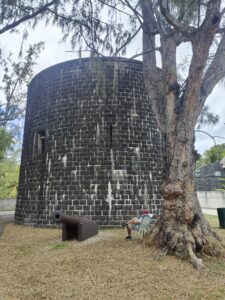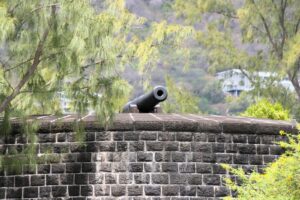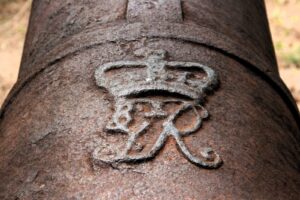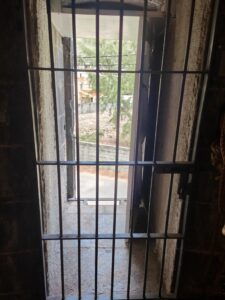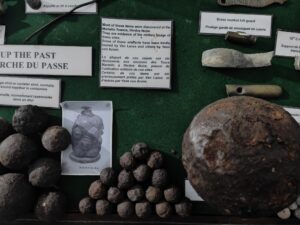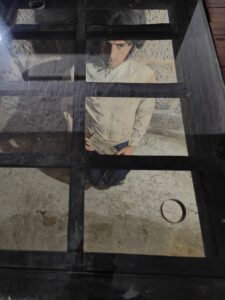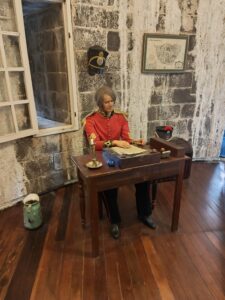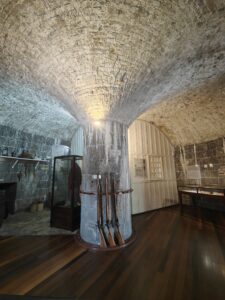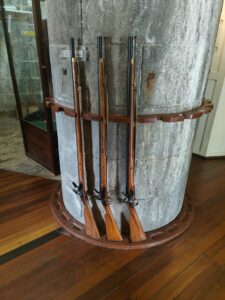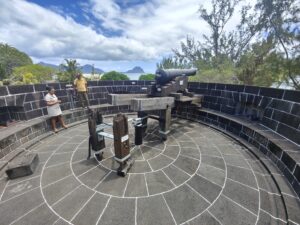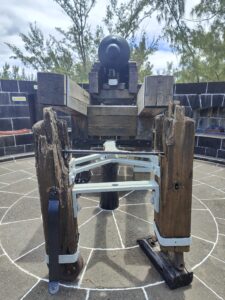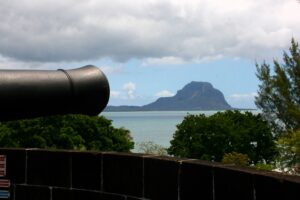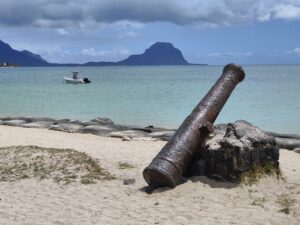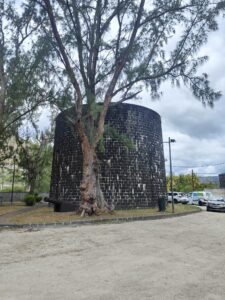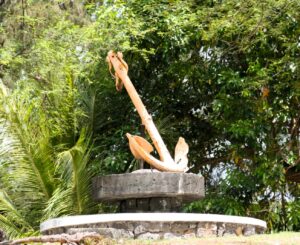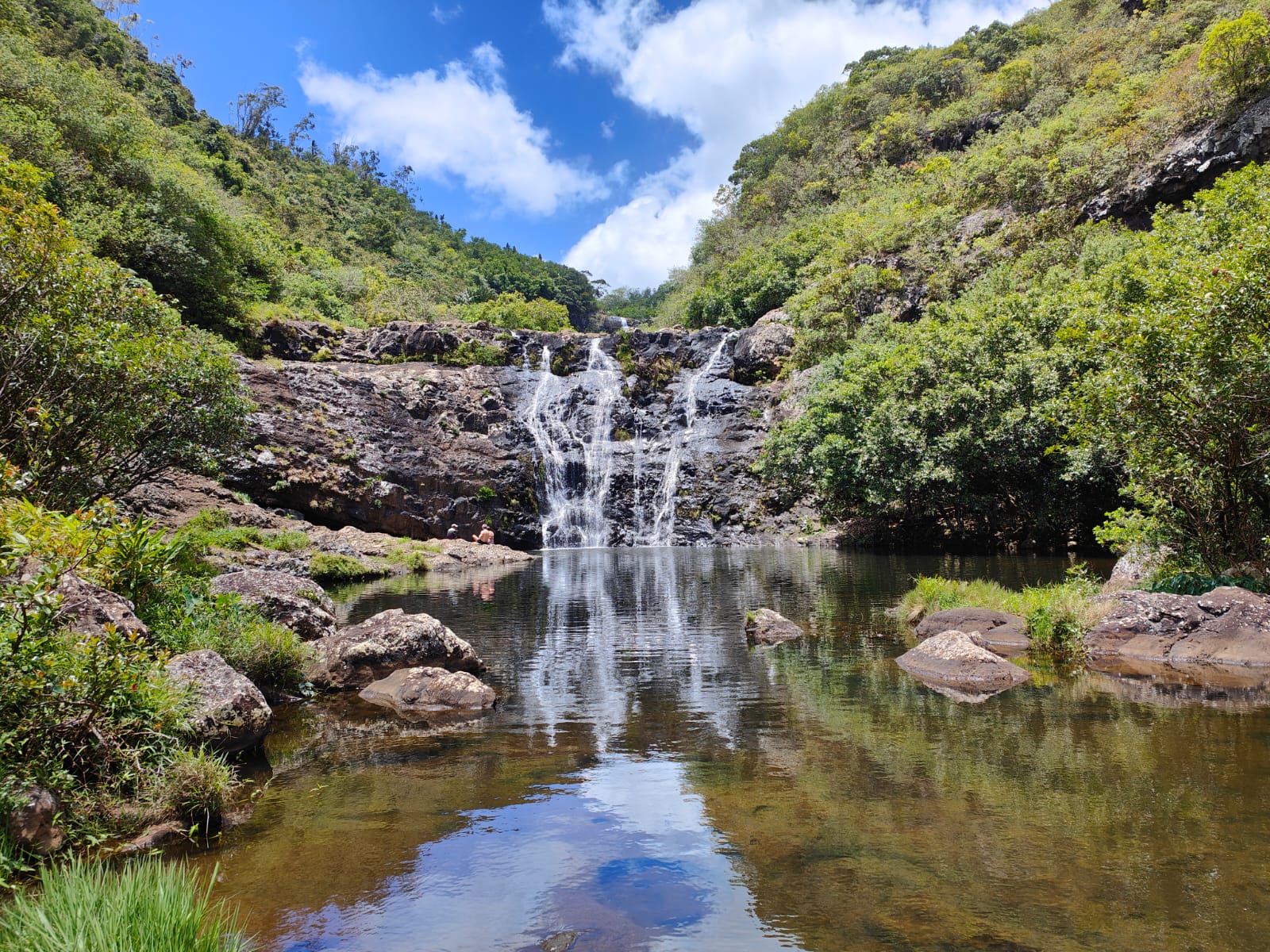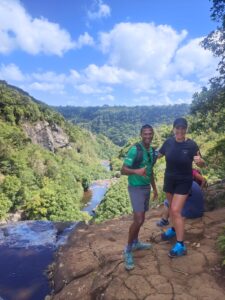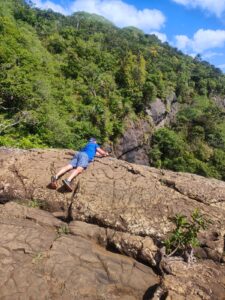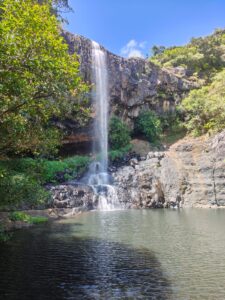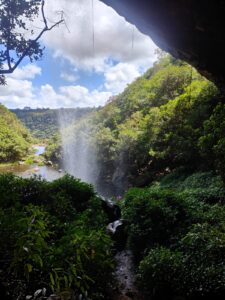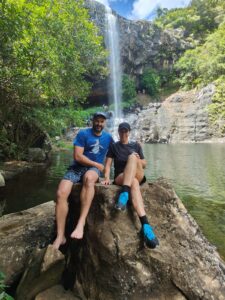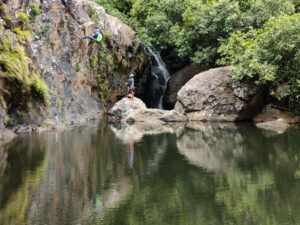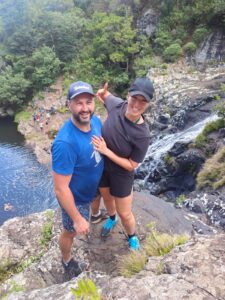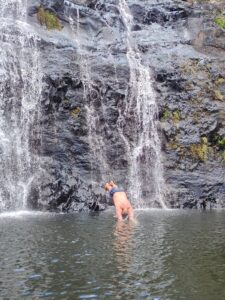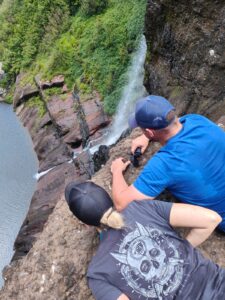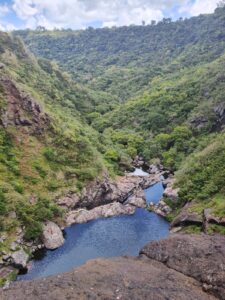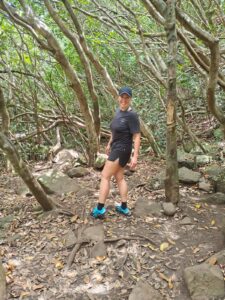Walking along the majestic avenue towards the Chateau de Labourdonnais is like passing through a tunnel. We’re told that the trees that obstruct the distant view yet create a magical, intriguing pathway are Ficus macrocarpa and also known as Chinese banyan. This is a ‘tunnel’ that is begging to be investigated. Every now and again the blazing sun appears from behind the white puffs of cloud in the sky. The natural sunlight almost provides spotlights along this tunnel as the rays shine through the branches and leaves. Heavenly birdsong drowns out the sound of our weary feet walking along the stony drive. We take a moment to pause. There is ‘light at the end of the tunnel’. We can see distant pillars forming part of a structure located behind a small fountain at the end of the path. We walk slowly under the blanket of greenery that shades us and the view changes with each step as we get closer to the building. Then, as if by magic, we have escaped. The avenue suddenly sprawls into a bowl shape that surrounds a basic and charming fountain. The water splashing out of the playful child statue cannot distract from the elegance and beauty of Chateau de Labourdonnais behind.
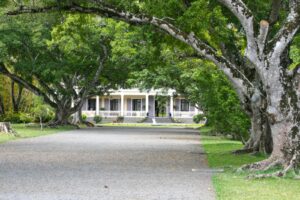
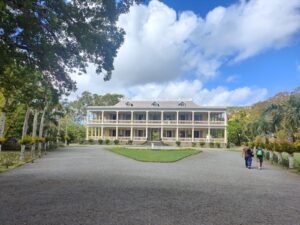
A brief history
The marketing material reads ‘estate established 1774’. As mentioned previously, this was during the French occupation of the island. At the time, the plot of land was a concession granted to two young orphans, Marie Louise and Henriette Tréouart de Longpré. We learned that these concessions were granted to colonists to develop the land. This normally involved property improvements and developing agriculture. By the time the British were in possession of the island, a certain Mr Jean Baptiste Germain bought a plot of the land in 1814. He built the first sugar mill in the island on that property. 7 years later in 1821, Mr. Jacques de Chasteigner Du Mée bought the estate. He set about extending it from a modest 186 to around 1400 acres in 8 years. Upon his death the property passed to his two daughters: Mrs Aubin and Mrs Bourgault. In 1839 the estate was named Labourdonnais (perhaps after the Governor we learned about in the last blog, however, he had nothing to do with this property). Mrs Bourgault’s son-in-law (Christian Wiehe) was married to her daughter Emilie. In 1856 Christian decided to build a chateau. It only took three years to complete. Christian Wiehe was evidently a clever man with good business acumen. I’m led to believe that he was a distinguished Mauritian.
The Chateau
This is not a castle (the French word château means castle), but a magnificent mansion. The pristine appearance screams wealth and prestige. The restoration work that has been undertaken here is most excellent. The designs of these plantation houses have taken into consideration the hot weather. This one has a double veranda that looks like a wrapping around the house that almost hides it. It is stunning with a colonnade of white/cream pillars, almost Romanesque, which are used to support the first floor and roof. It is, to my mind, a simple yet effective design. One could imagine sitting out on the veranda and enjoying the view back up the avenue. We sat awhile and watched the playful birds. There is a difference between Chateau de Labourdonnais and Eureka Mansion, built 1830, and it is stark. One feels that the first owner of Chateau de Labourdonnais was richer than Mr. Le Clezio but this is only an impression gained. This may be down to differing levels of investment in the refurbishments but there is a clear contrast.
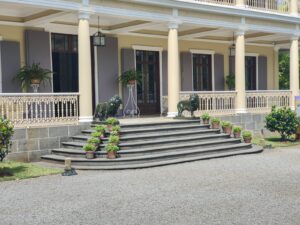
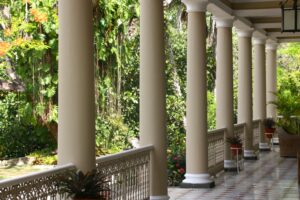
After walking across the veranda and through the entrance hallway, we start to notice the symmetrical alignment and details of the whole house. The dining room has delightful scenes painted on the walls which add a real splash of colour. A chandelier provides glamour above a plain brown table which has been left laid, one feels, for some imaginary guests. On the opposite side of the hallway is the lounge. Again, this is beautifully restored. It is, however, very bland in comparison to the colour and style in the room we have left behind. Other rooms on this floor include a pantry, a storage room and a study.
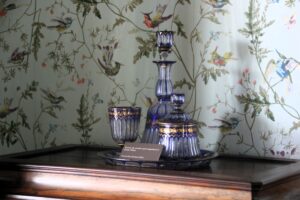
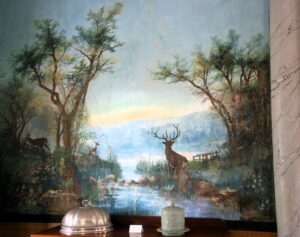
On the first floor is a bedroom neatly laid out, and where you can watch a documentary about the restoration work that took place here (time was short and, sadly, we missed out), and then there are some exhibition rooms. These displays provide valuable information about the island, the agriculture activities that took place and the history of the Wiehe family. Regrettably, we didn’t have the time to read all this information as we were exhausted from our day out. Thankfully, I managed to take some notes on the important information that has proved invaluable in writing this blog. After completing this floor, we left the house from the far side to explore the grounds.
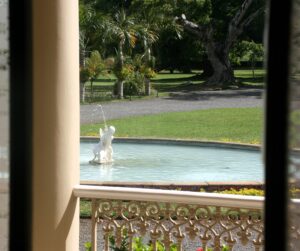
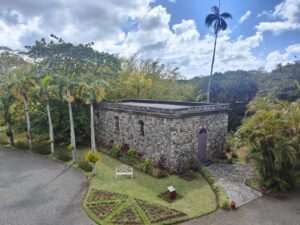
The Domaine
I mentioned earlier that the estate is vast and not all could be seen on this quick visit. We made do with the visit to the Chateau de Labourdonnais and a walk around the small garden area attached to the side of the house and also to a little ‘farm’ area. The small garden area and grounds around the house showcase the natural beauty of the vibrant flowers, and trees including towering palms. Altogether they create a sumptuous display of colour and exude a potent fragrance. Being animal lovers, we quickly bypassed the ‘farm’ area as it seemed to be too crowded and a lot of petting was underway. Instead, we enjoyed the local flowers and birdlife. Along the way we could see the sugar mill in the distance and we finished at the rum distillery. The wider estate has diversified as time has passed and developed a couple of shops, a restaurant, a café, a garden centre, and a school. A ticket to visit the chateau also includes a tasting session of their home-grown rum. Created using fruits and sugars grown on the estate, we feel sure that the rum is good, but, sadly, our taste buds didn’t enjoy it (to be fair we don’t enjoy rum back home either!!). We can say that we sampled the rum but are not the best tourists to pass comment.
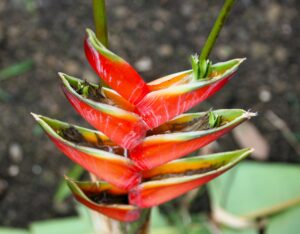
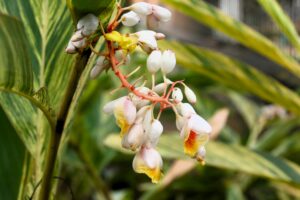
Chateau de Labourdonnais was the most up to date attraction that we visited on the island. It is testament to the stunning work that has been undertaken to preserve Chateau de Labourdonnais. We hope to return one day. In the meantime, anyone visiting please feel free to let us know your feelings.
